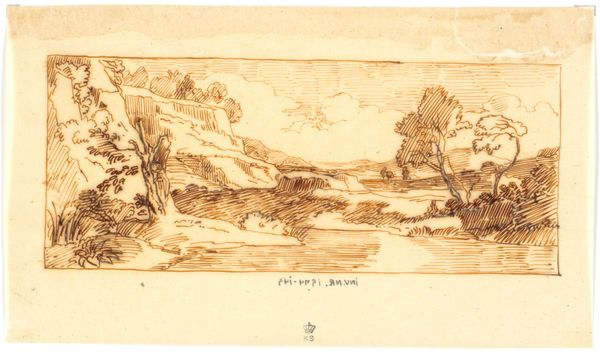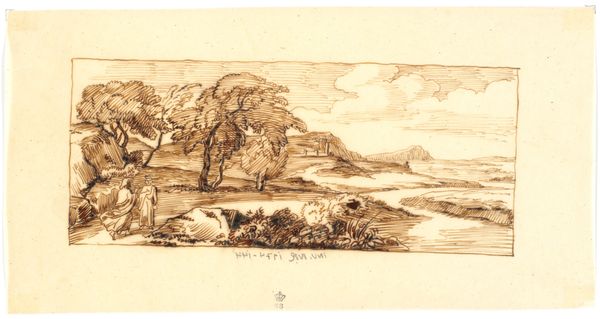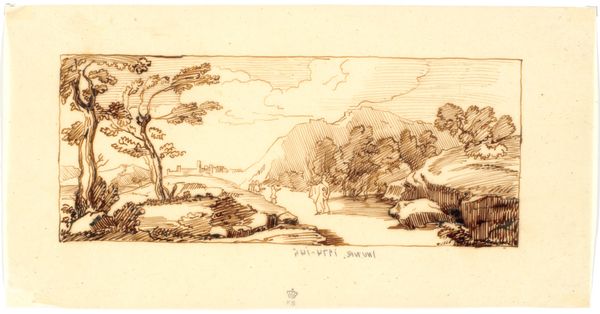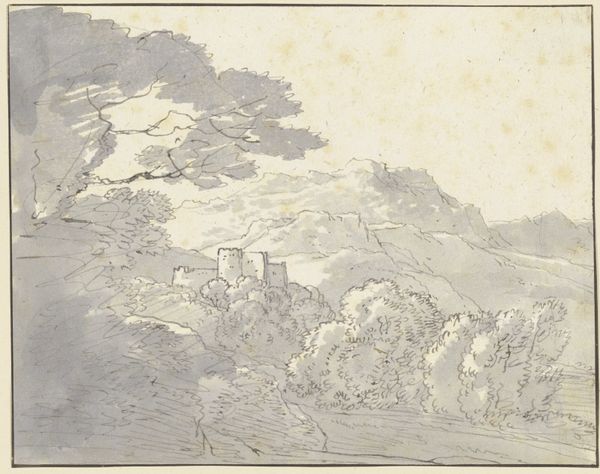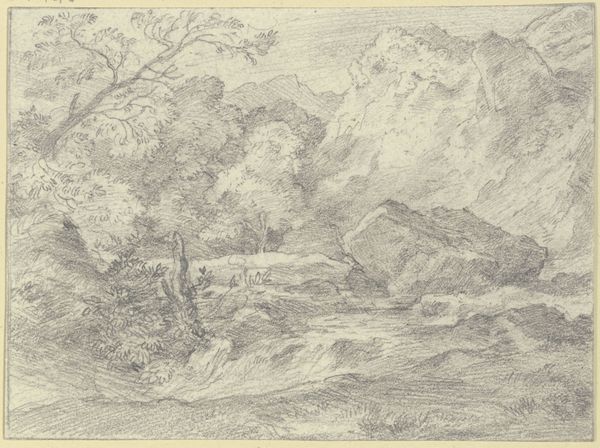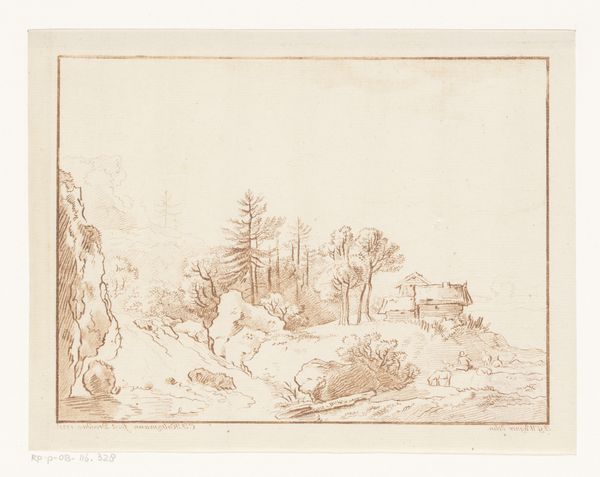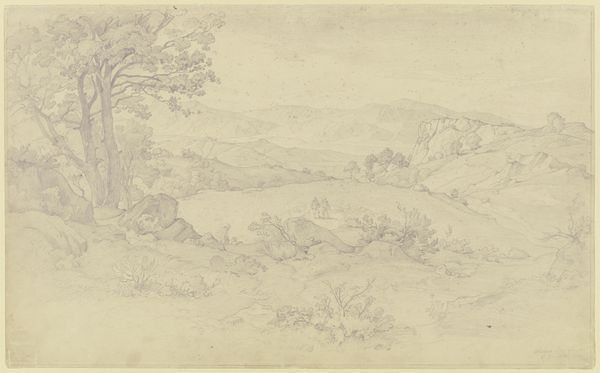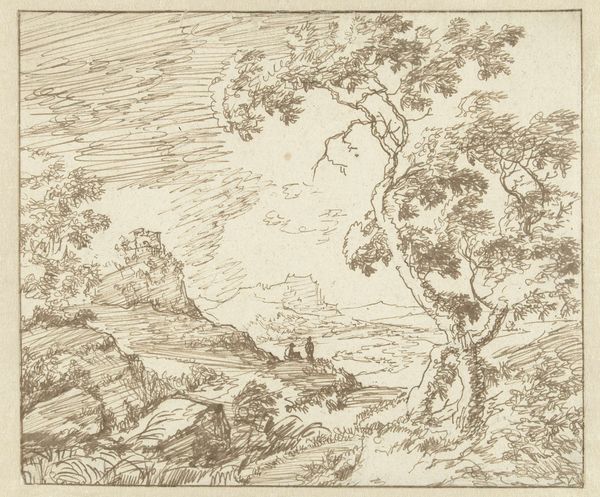
drawing, ink
#
drawing
#
narrative-art
#
landscape
#
etching
#
ink
#
romanticism
Dimensions: 114 mm (height) x 220 mm (width) (bladmaal)
Editor: So, here we have Martinus Rørbye's "Landscape with Biblical Motif," created sometime between 1803 and 1848. It's an ink drawing, and I'm struck by how the landscape seems both idealized and lonely, somehow. What do you make of this combination of landscape and religious narrative? Curator: Well, think about the historical context. Rørbye was working during a period where nationalism and religion were really intertwined. How might depicting a biblical scene *within* a distinct landscape shape the viewer’s understanding of both the religious story and the nation itself? Does the landscape act as a kind of validation, or perhaps even a limitation, of the religious narrative? Editor: That’s interesting! I hadn’t considered how the specific landscape might tie into Danish nationalism at the time. Does choosing to depict this biblical scene in ink drawing also influence the image's cultural relevance in any way? Curator: Absolutely. Consider the reproducibility of the print and the democratizing potential of sharing such images. Who do you think this kind of art would be appealing to? The rising merchant class, maybe? Were such depictions about personal devotion or, possibly, about displaying cultural capital through a shared aesthetic and ethical framework? Editor: It makes me consider this in a new way, looking beyond just the aesthetic, to think of its societal impact during the early 19th century. Curator: Exactly! These landscapes offered viewers a carefully constructed sense of place and identity in a rapidly changing world. Seeing the art and its viewers together, we might reveal deeper political purposes and ideological leanings of an emerging Danish state. Editor: Fascinating. It seems like appreciating this work involves considering not just what's *in* the image, but what it *did* in the world. Thanks for offering that deeper context.
Comments
No comments
Be the first to comment and join the conversation on the ultimate creative platform.
